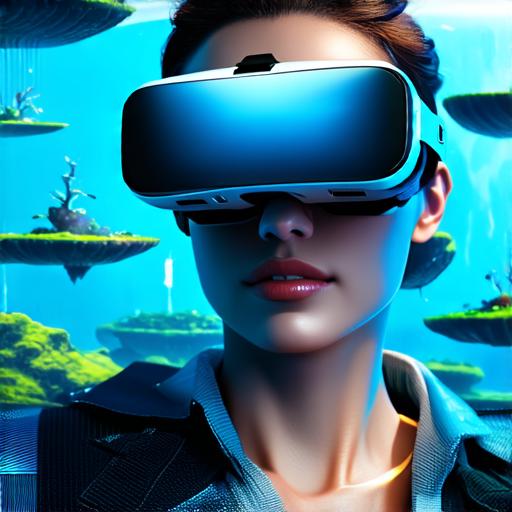Virtual reality (VR) is a rapidly growing technology that allows users to immerse themselves in digital worlds. VR glasses are an essential part of the VR experience and play a crucial role in enhancing the user’s immersion.
What are VR Glasses?
Virtual reality glasses are head-mounted displays that provide users with an immersive and interactive experience. These glasses use advanced technology to create a 3D environment that surrounds the user and engages their senses.
There are two main types of VR glasses: wired and wireless. Wired glasses are connected to a computer via a cable, while wireless glasses use Wi-Fi or Bluetooth to connect to a device.
How do VR Glasses Work?
Virtual reality glasses work by tracking the user’s head movements using sensors. These sensors measure the position of the user’s head and adjust the image displayed on the screen accordingly. The glasses also have built-in displays that project high-resolution images into the user’s field of vision.
The VR experience is further enhanced by the use of stereoscopic displays. These displays create two separate images, one for each eye, which are then combined to produce a 3D image. This technique is known as binocular parallax and allows the brain to perceive depth and distance in the virtual environment.
Enhancing Your VR Experience with VR Glasses
Virtual reality glasses can greatly enhance your experience by providing a more immersive and interactive environment. Here are some ways that VR glasses can improve your VR experience:
-
Improved Immersive Experience: With VR glasses, you can fully immerse yourself in the virtual world. The head-mounted display provides a large field of view, which creates a sense of presence and makes it harder to separate reality from virtual reality.
-
Enhanced Interaction: VR glasses provide users with hand-tracking technology, allowing them to interact with the virtual environment using their hands. This enhances the user’s ability to manipulate objects and engage in realistic interactions with the virtual world. Hand-tracking can also be used to create more intuitive controls for VR applications.
-
Customization: VR glasses allow users to customize their experience by adjusting the settings on the headset, such as the resolution, field of view, and image brightness. This allows users to tailor their VR experience to their preferences and optimize it for specific tasks or applications.
-
Wireless Convenience: With wireless VR glasses, users can move freely without the limitations of cables. This makes it easier to explore virtual environments and reduces the risk of tripping or getting tangled in wires. Wireless VR glasses also provide a more natural experience by eliminating the need for headphones, which can be uncomfortable or distracting.
-
Research and Development: Virtual reality glasses are being used in research and development applications to create more realistic simulations and improve user experiences. By providing users with a more immersive and interactive environment, VR glasses can help researchers and developers better understand human behavior and improve the design of VR systems.
FAQs
1. What types of VR glasses are available?
There are two main types of VR glasses: wired and wireless. Wired glasses are connected to a computer via a cable, while wireless glasses use Wi-Fi or Bluetooth to connect to a device.
2. How do VR glasses work?

VR glasses work by tracking the user’s head movements using sensors. These sensors measure the position of the user’s head and adjust the image displayed on the screen accordingly. The glasses also have built-in displays that project high-resolution images into the user’s field of vision.
3. What is stereoscopic display?
Stereoscopic displays create two separate images, one for each eye, which are then combined to produce a 3D image. This technique is known as binocular parallax and allows the brain to perceive depth and distance in the virtual environment.
4. How do VR glasses enhance my experience?
VR glasses can greatly enhance your experience by providing a more immersive and interactive environment. They improve the user’s ability to engage with the virtual world and create a more realistic environment. VR glasses also provide users with customization options, wireless convenience, and are being used in research and development applications to improve user experiences.
5. What are the benefits of using VR glasses?
The benefits of using VR glasses include improved immersive experience, enhanced interaction, customization, wireless convenience, and research and development applications.
Conclusion
Virtual reality glasses are an essential part of the VR experience that can greatly enhance your experience by providing a more immersive and interactive environment. With advancements in technology, VR glasses are becoming more affordable and accessible, making them a popular choice for gamers, professionals, and researchers alike. By understanding how VR glasses work and how they can improve your experience, you can fully unlock the potential of this exciting technology.
